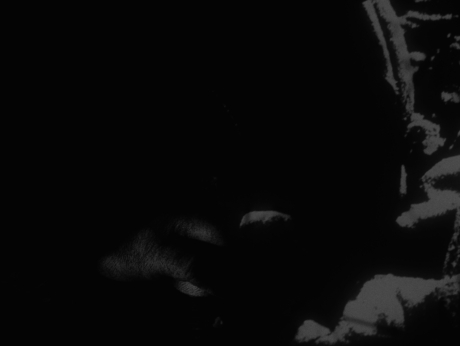
 overview
overview
About the film
Sound Imitation: Bohdan Mazurek
Production Manager: Zbigniew Sroczyński, Magdalena Barycz
Production: Animated Film Studio (Cracow)
Rights: National Film Archive
Language: pl
hide tab

 storyline
storyline
Dark, in some flats the light is on. A few people are quickly walking down the streets. A man walks out of the gloom. He goes towards the station and gets into a train. During the trip he daydreams, thinks about memories from his childhood. He sees a bird flapping its wings, his family home, a rural landscape… The return journey begins. When the train stops at the station, the dreams disappear and a tired, stoop-shouldered man walks out.
hide tab

 comment
comment
hide tab

 by author
by author
hide tab



















In 1967 he graduated from the Painting and Graphic Arts Department of The Academy of Arts in Cracow, where he studied in the Animated Film Studio run by prof. Kazimierz Urbański. Three years later he became associated with the Animated Film Studio in Cracow, where he debuted after two years with the film “The Return” (1972), a moving trip to childhood, which he returns to in many of his following films.
“When I was a student of The Academy of Arts, I wanted to be a painter, I never thought I would be making films. This happened by accident, because I was temporarily doing graphic design and ended up in Animated Film Studio” – he said in Jerzy Kapuściński’s TV program “Other Cinema”. He added that through painting he could not directly speak about man, about his psychology and emotions. It was this desire which brought “The Return” – a very intimate impression about a person who returns for a moment to the world of his past, which has inevitably ended.
During a conversation accompanying a retrospection of his films at the Animator festival (2012) in Poznan Jerzy Kucia revealed that his debut film, realised with the artistic help of Mirosław Kijowicz, was not well received. However thanks to receiving the Grand Prix in the category of animated films at the II International Short Film Festival in Grenoble (1973) and the Special Award at the XXII International Film Festival in Melbourne (1973) he was also noticed in Poland. “The Return” is often compared to “The Journey” (1970) by Daniel Szczechura. In it also a man takes a train. He looks out the window at the same repetitive landscape. A similar poetics is visible in “Concrete Poles” (1971) by Zbigniew Kamiński and Krzysztof Nowak and in two etudes by young artists in recent years: “The Journey” (2005) by Barbara Kasperczyk-Jankowska and “Journey to the East” by Magdalena Kulesza. “The Return” along with two further films – “The Lift” (1973) and “The Circle” (1978) form a specific triptych in which the artist from Cracow uses three types of movement: horizontal, vertical and circular. These images have grown from the same trunk, from the human’s inner world. Kucia’s films are never-ending journeys to the heart. Jerzy Armata
In contrast to his more experienced colleagues, in his debut Kucia created a type of artistic communication which invited the audience to participate in a common creation of the emotional experience conditioned by everyday life. They consisted in suspending one’s participation in the events of reality by: a train trip (“The Return”), a ride in a lift (“The Lift”), waiting in front of a train barrier (“The Barrier”), etc. These moments, which gave a break from life for a longer or short time, gave an opportunity to set in motion the whole richness of inner images, memories, impressions, dreams, imagination, and subconscious impulses. It became a common opinion that Kucia’s work has an inner logic (imposing both the structure of each film and the relations between the films) which sets free real situations and which, despite its subjective character, becomes a basis for an inter-subjective communication with the viewer, opening due to the artistic impulse to experiencing universal emotional states. Bogusław Zmudziński, 1970 - 1980: Srebrna dekada, in: „Polski Film Animowany”, ed. Marcin Giżycki, Bogusław Zmudziński, Warszawa: Polskie Wydawnictwo Audiowizualne, 2008, p. 68